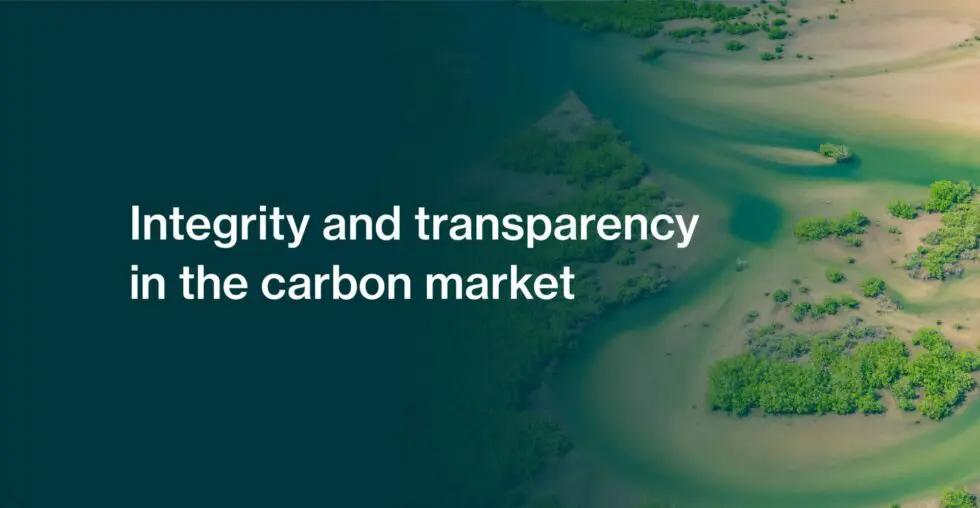Integrity and transparency in the carbon market

The genesis of AxessImpact lies in the transparent distribution and sharing of knowledge to challenge and improve the way we assess impact. We welcome the scrutiny of Die Zeit, The Guardian and SourceMaterial on the carbon credits. Still, it is important to emphasize that these are needed mechanisms to mobilize greater investments for climate projects. The difficulties in their assessment should uphold their potential in helping to finance the climate transition. However, the quality of carbon credit should be directly related to the quality of the underlying projects and their credible contribution to emission reduction or removals. Improved methodologies, such as dynamic baselining, can improve carbon emission reduction assessment. AxessImpact puts transparency at the core to ensure credibility and trust in the impact of climate projects.
One credit but varying quality
Firstly, not all carbon credits are the same; their impact depends on their origin. For example, some originated via avoided/reduced emissions projects such as energy–efficiency or renewable energy, while others come from emissions removal such as afforestation/reforestation projects of emission reduction. These projects can be technological solutions or nature–based.
Carbon emission reduction or removal unit/asset thus created are the same in terms of carbon dioxide emissions but represent different complexities to assess and monitor as one offers a clearer and more measurable impact in terms of baseline and additionality than the other.
Carbon markets, a necessary mechanism
Despite their source, carbon credits are today the most used vehicle of monetization for positive output in innovations and nature-based solutions, offering a relatively liquid and understood financing vehicle to bridge funds towards projects that, without them, would never be able to happen. In their additional role, carbon credits represent a valuable way to finance positive climate projects. However, even though the financial markets well understand carbon credits doesn’t mean that they represent a quality asset, and the impact they represent is real. Their quality should be directly defined by the quality of the underlying project and its proofs of impact, not by the standard “labelling” it or because investors are willing to buy them.
At AxessImpact, we believe carbon markets can help support and fund the fight against global warming, but we wish to bring greater trust and quality into the underlying projects. Transparency and collective action are keys to developing new models and improving current methodologies.
Dynamic Baseline
Accelerated deforestation is a real challenge faced by our generation. Our mere survival depends on protecting our ecosystems, nature and forests. REDD projects have been instrumental in creating incentives to save these forests. However, the problem with the REDD projects, as mentioned by the study, lies in the estimation of the carbon emissions that are avoided/saved. The elephant in the room that everyone sees and no one wants to deal with is the baseline and the measure of additionality = the deforestation rate.
For a REDD project, we can simplify the baseline concept to the deforestation rate – the rate at the forest would have been cut down if the project had not existed. For this reason, the assessment of the deforestation rate should become the core of this discussion. The additionality of a project depends on it. Baselines are not static; they change through time, they need to account for leakage, they can’t be opaque, they need to be dynamic and evolutive, based on quantitative methodologies and be transparent and auditable.
Why not open the discussion on the development of dynamic baselines? A dynamic baseline is observed, not predicted. To compute it, we can monitor the impacts selected by the project developer, such as carbon emissions in the control area. The control area is matched to the project to ensure that both experience similar background land use. So if political events, economic swings, or other unexpected shocks alter background deforestation, baseline impact estimation should adjust automatically.
In addition, the uncertainty of a dynamic baseline can be quantified against actual observations.
Current baselines do not report uncertainty. In other words, they are assumed to be accurate year after year. A dynamic baseline approach can quantify baseline uncertainty by constructing control areas for placebo projects – randomly selected areas without a carbon project. Because the placebo and its matching control area have no carbon project, their annual carbon emissions should match. We can compute baseline uncertainty based on how well they match. The number of credits issued can then be adjusted to account for uncertainty. Control areas compare like with like. Some registries have allowed unrealistically aggressive baselines for projects on public lands, for example. In contrast, our approach would not make assumptions about activity on public lands but select and observe control areas on other public lands without impact projects.
Conclusion
To sum up, this is not an easy task but more a wicked problem, and wicked problems require critical thinking, collective action and constructive challenging to evolve into better solutions.
We built the Habitats precisely for this reason: to create immutable proofs of impact (positive or negative) that a network of independent experts can comprehensively verify while remaining standard agnostic and keeping auditability and interoperability with multiple solutions. Thanks to this technology, multi-stakeholders can collaborate at multiple scales, across all sectors, with strong governance, auditable measuring monitoring and verification protocols, covering different nature-positive business solutions such as carbon and biodiversity certificates, SDGs, as well as impact innovations.
